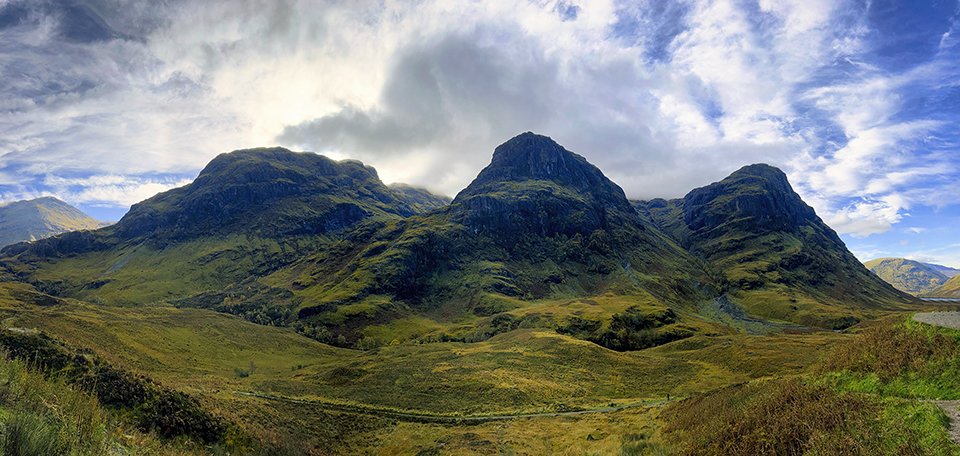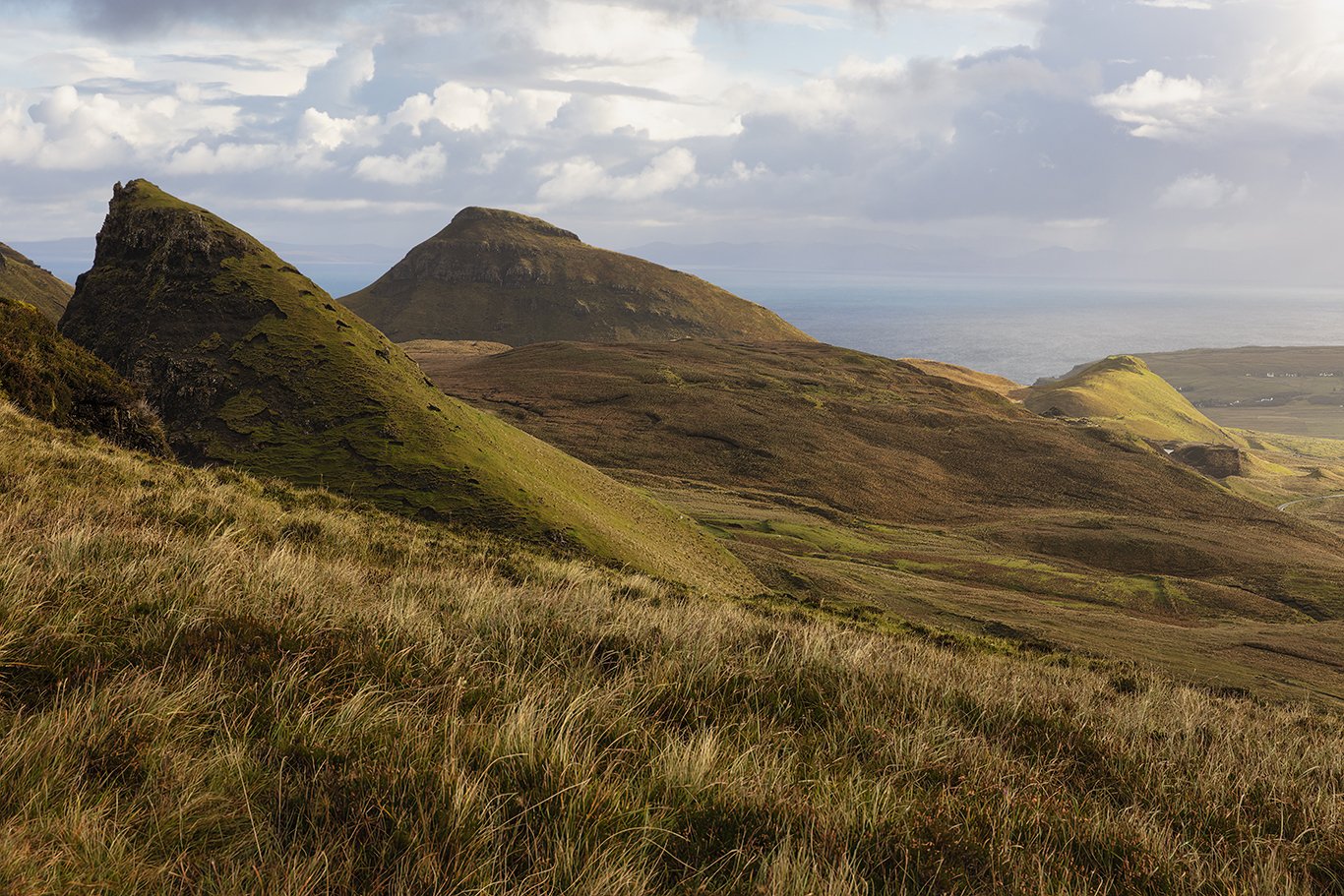We’ve taken the ferry from the Isle of Lewis and Harris to the mainland of the Scottish Highlands. It is time to explore Glencoe, a village situated in the steep-sided Glencoe Valley. This is the third leg of our tour, complete with numerous sites to explore and photograph.
After a trip to the visitor center, we are now more acquainted with this glen of volcanic origins. Situated between the county of Argyll and the province of Lochbar, this is an expansive area that is ideal for mountaineers, hill walkers, and climbers.
As we meander through The Glen, we come across a black cottage on a steep hillside. The sky appears threatening, but it is not yet raining for a change. This hut seems isolated from the rest of the world, nestled amongst numerous small mountains, typical for the Scottish Highlands.
Named after the River Coe, The Glen has been described as “soaring and dramatic,” by Scottish Natural Heritage, and is noted for its transition between “high mountain pass and lightly wooded strath.”
Continuing with our journey down route A82, we come to an impressive area known as the Three Sisters. A beautiful green valley abuts a series of imposing mountains, and I feel like this is a magical land out of a medieval storybook. The Three Sisters are known as Bidean nam Bian Mountain in Gaelic and have a yellow-brown appearance in October.
It’s getting later in the day, so we keep moving right along to an area known as The White House. It is quite overcast, but there is no precipitation. This scene is idyllic with small waterfalls in the foreground, the white house in the mid-ground, and mountains in the background. I get several different compositions and settle on one as shown here.
Our group leader, Don, says it’s time to pack it in. We head back to the bus, with one site left on the day’s itinerary. Some time passes, and we are not moving. There is no sign of Don, and the remaining daylight is starting to fade.
Eventually, Don returns to the bus to let us know that an incident has occurred. It turns out that a man who had parked his car next to the bus had hiked up the mountain with his eleven-year-old son and eight-year-old daughter.
The daughter suffers from asthma and began having an acute asthmatic attack. The father sent the son down the mountain to look for the daughter’s inhaler in the car. That was when Don found him rifling through the vehicle, with the inhalers nowhere in sight. The little boy was distraught!
Don comes on the bus to let us know that we will not be making it to the last site of the day. He turns his attention to me, a cardiologist, to get some medical advice on how to handle this situation. This is complicated. We can’t see the father and daughter up the mountain. Even if they were accessible, a full blown asthmatic attack would require inhalational bronchodilators and/or intravenous steroids.. My advice is to call 911 which is 999 in Scotland.
An ambulance is called, and the rig shows up in forty-five minutes. During this time, Barbara, one of the clients on this tour and a retired emergency room nurse, brings the boy on the bus. She keeps him occupied by asking questions about where he goes to school, has this happened to his sister before, does his family do a lot of hiking, etc.
Finally, we see the father carrying the daughter on his shoulders down the incline. He eventually makes it to the bus, and the ambulance driver takes over. I can see that the girl is wheezing, but probably will not need steroids, and does not need to be intubated.
We head back to the hotel and straight to the bar. This has been exhausting, but what was done was worthwhile. It’s obvious that despite being a photographer, I can never stop being a medical doctor. I hope tomorrow ends more smoothly!










